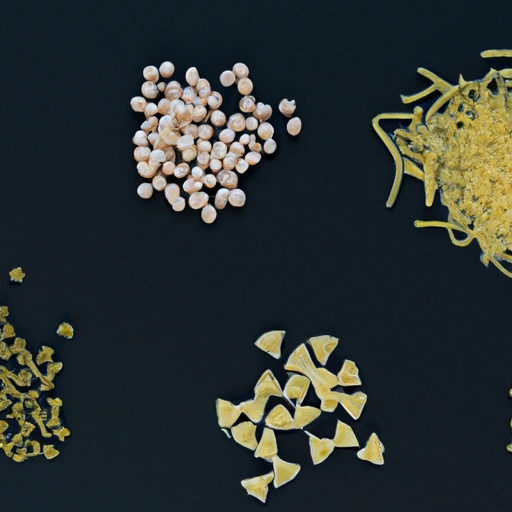Pastina
Description

Pastina, which means 'little pasta' in Italian, is the smallest form of pasta available and is a popular ingredient in various cuisines. It is typically made from wheat flour and water, and sometimes enriched with vitamins and minerals. Pastina comes in a variety of shapes such as stars, rice shapes, and tiny tubes, making it an attractive addition to many dishes for all ages, particularly for infants and toddlers who are learning to eat solid foods.
Common uses
Pastina is commonly used in soups and broths, as a side dish, or mixed with a sauce. It's a popular choice for sick days, as it is easily digestible and can be a soothing, warm meal. Additionally, it serves as a perfect food for babies transitioning to solids due to its small size and soft texture when cooked.
Nutritional value
Calories
Per 1/4 cup (42 grams or approximately 1.5 ounces) of dry pastina, there are about 150 calories.
Protein
Pastina contains roughly 5 grams of protein per serving.
Fat
There is less than 1 gram of fat in a typical serving of pastina.
Carbohydrates
A serving size of pastina provides about 31 grams of carbohydrates.
Vitamins
While not particularly high in vitamins, enriched pastina may contain added B-vitamins like folic acid.
Minerals
Enriched pastina may have minerals like iron for added nutritional value.
Health benefits
Pastina provides a source of energy from its carbohydrates and, when enriched, can contribute to the intake of essential nutrients like iron and B-vitamins. Its ease of digestion makes it suitable for a light diet during recovery from illness or for young children.
Potential risks
As with any pasta, pastina is a form of processed carbohydrate, and excessive consumption may contribute to weight gain. It also contains gluten, which is unsuitable for those with celiac disease or gluten sensitivities. Always check the packaging for potential allergens.
Common recipes
Pastina is often used in clear broths, vegetable soups, and is also enjoyed simply cooked in water or milk and then mixed with butter or cheese as a comfort food.
Cooking methods
To cook pastina, bring water to a boil, add the pasta, and cook for about 5 minutes, or until it reaches the desired tenderness. It can also be toasted in a pan before boiling to enhance its nutty flavor.
Pairing with other ingredients
Pastina pairs well with light flavors such as lemon, herbs, and mild cheeses. It is also a good complement to vegetables, lean proteins, and clear soups.
Summary
Pastina is a delightful and versatile pasta that holds a special place in the hearts of many. Its historical roots in Italian cuisine and its spread to various cultures highlight its universal appeal. With its simple preparation, nutritional value, and comfort-food status, pastina remains a timeless ingredient suitable for a myriad of dishes around the world.